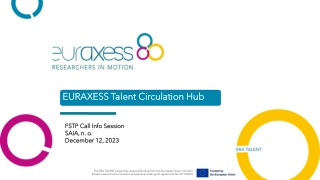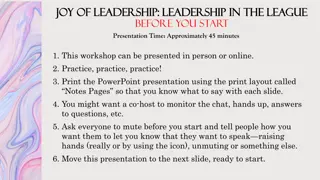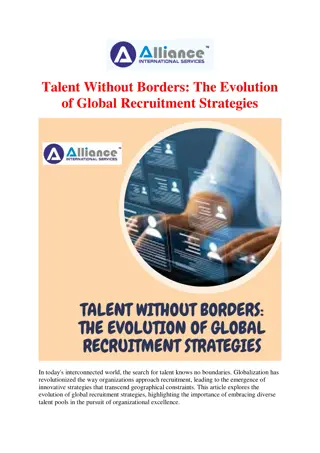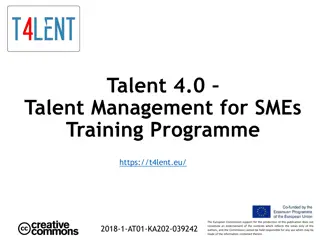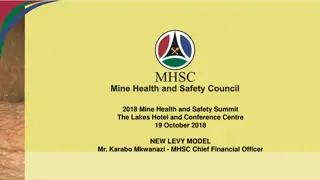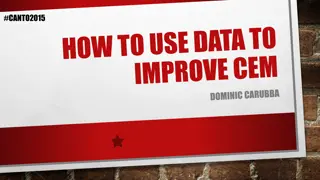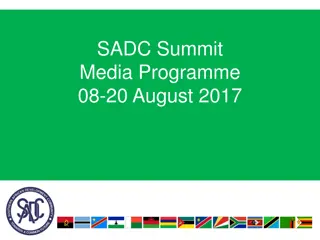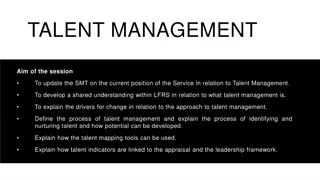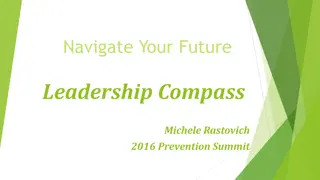
Strategic HR Leadership: Maximizing Business Impact Through Talent Management
Learn the essential steps to strategic HR leadership, from understanding the business and identifying gaps to addressing culture challenges. Discover tools like SWOT analysis and Porter's Five Forces to measure impact effectively.
Download Presentation

Please find below an Image/Link to download the presentation.
The content on the website is provided AS IS for your information and personal use only. It may not be sold, licensed, or shared on other websites without obtaining consent from the author. If you encounter any issues during the download, it is possible that the publisher has removed the file from their server.
You are allowed to download the files provided on this website for personal or commercial use, subject to the condition that they are used lawfully. All files are the property of their respective owners.
The content on the website is provided AS IS for your information and personal use only. It may not be sold, licensed, or shared on other websites without obtaining consent from the author.
E N D
Presentation Transcript
Talent Leadership Presentation Time or Sub-Headline Here PRESENTED BY Brad Goskowicz and Aaron Fisk
CEOs Vision Company vision HR s role Requirements for this HR leader Value to the C-Suite of a strategically focused HR leader
Talent Leadership: Steps to Strategic Impact 1. Learning the Business 2. Identifying Gaps 3. Measuring Impact
Learning the Business It is key for HR Leaders to truly understand the business they are supporting Working in the business Asking questions (learn the Why ) Understanding the financials Getting the perspective of the leadership team Understanding the business s tolerance for risk Is your default answer No ? Learn to manage the grey Identifying the true differentiators of the business Sales? Marketing? Engineering? R&D? Customer Service? Quality?
Identifying Gaps Where are the talent / skill gaps? Can these be developed internally? If not, relationship recruitment for external hires Are there cross functional process / collaboration gaps? What are the significant business risks? New product development pipeline? Pricing / margin pressures? Quality issues? New entrants or market consolidation? Succession / disaster planning?
Culture Gaps Is the current company culture hindering the organizations ability to reach it s goals? Does the leadership team see it? Is the leadership team part of the problem? Do they have the desire to take the necessary steps to change the culture? HR cannot be the only one leading culture change The entire leadership team must be onboard
Gap Analysis Tools SWOT analysis Porter s Five Forces 9 Box exercise Employee Engagement Survey Fishbone diagram McKinsey 7S Nadler-Tushman s Congruence Model Burke-Litwin Causal Model
Measuring the Impact Identify the most meaningful metrics based on your business and gaps Establish a baseline to start from Employee Engagement Net Promoter Score, time to fill, retention, internal development and promotion Financial Metrics Sales, Gross Margin, EBITDA, Net Income Quality Metrics Customer satisfaction, on-time delivery, errors, defects, returns

